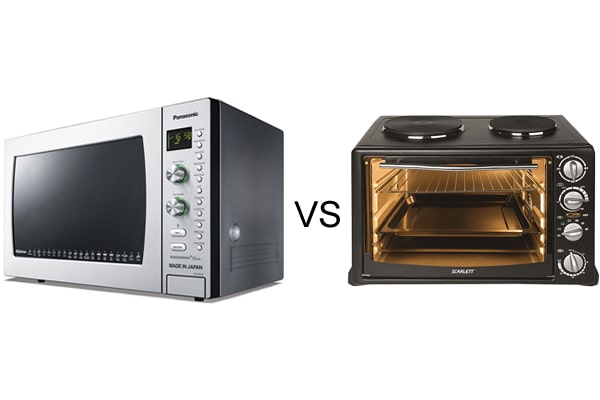Words such as annuals and perennials are some of the commonly used words out there. However, they are mostly used in reference to plants. This is because some plants are perennial while others are annual. Those plants that die during winter are referred to as annual plants. Therefore, they have to be planted each and every year. On the other hand, those plants that grow back annually on their own are commonly referred to as perennial plants. In fact, perennials are planted only once. Since most people have been confusing these two terms, it is imperative that we take a closer look at them for clarity purposes.
What are Annual Plants?
If something is annual, it means that it occurs once every year. Ideally, a year usually has 12 months. Therefore, if something takes place annually, then it takes place once every 12 months. When used in reference to crops or plants, the word annual can mean those plants that complete their lifecycle in 12 months. This refers to the period between germination and death of these plants.
However, annual plants are known to produce beautiful flowers. Most people like them as they add some aesthetic to their homes. As we speak, there are several types of annuals. Some of the popular ones include sunflower, lantana, vinca, petunia, and cosmos.
It is important to note that there are two types of annuals. These include:
- Winter annuals
- Summer annuals.
Summer annuals are known to produce seeds and then die during the warmer months. On the other hand, winter annual plants produce seeds and then die during the winter season. Besides this, you will realize that annuals normally have less time. Therefore, they usually produce more seeds so as to make up within the given period.
In addition, it is imperative to note that annuals bloom for one season only. This is because there are not affected by climatic zones or the regions they grow in. Generally, these plans will grow at the same time, regardless of where they get planted.
What are Perennial Plants?
Like we mentioned above, perennials are capable of living for 3 or more seasons. Besides this, these plants regrow during the spring season. It is also important to note that the blooming period of these plants is relatively short. However, some perennials take a longer period to bloom.
Most gardeners like perennials as they are less involving. Once you plant them, they will grow independently and will later regrow automatically during the spring season. Unlike other plants, perennials usually have a dormant root in the soil. This feature makes them regrow automatically year-in, year-out.
Since perennials hardly have pressure to yield more seeds and flowers, they are capable of doing it throughout the year. This happens year-in, year-out. Unlike other plants, these ones focus more on their roots and thereby strive to make them stronger than ever.
A good example of perennials include:
- Yarrow
- Clematis
- Coneflowers
- Coreopsis
- Peonies
Besides the plants mentioned above, a good example of perennials are the shrubs or trees. This is because they grow for more than two years. Herbaceous perennial is another good example of a perennial plant that you can find out there.
Like we mentioned above, the root of these plants can last for ages and thereby enable the plant to keep on regrowing. During fall, the top portion is the only part that dies off. The root, on the other hand, remains dormant in the ground.
If you are looking for plants that need little maintenance, perennials are the ultimate choice for you. Besides needing little or no maintenance at all, these plants tend to be more permanent than their peers.
Biennial Plant
A biennial plant is a plant that completes its entire life cycle in two years instead of one. The name comes from the fact that the plants grow during the first year, die, and then are completely replaced by new growth during their second growing season. This pattern can be observed in annuals and perennials as well. Biennial plants generally bloom only once, then die, but they can also be made to bloom more than once if they are grown indoors or continuously propagated from cuttings or seeds. Some common examples of biennials include chrysanthemums, crocus, irises, lilies, peonies, poppies, and tulips.
Main Differences Between Annuals And Perennials (Annual vs Perennial)
Since we have looked at each plant individually, time is ripe for knowing what sets them apart. After all, they differ in several aspects. Here are the aspects that distinguish these two plants:
1. Lifecycle
Like we mentioned above, annual plants normally have a lifecycle that lasts for only 12 months. Perennials, on the other hand, have a lifespan of more than 2 years. Therefore, if you choose to grow annuals, you have to plant them each and every year. If you opt to grow perennials, you will only need to plant them once, and you will be good to go. Once these plants grow, they will keep on regrowing each and every spring on their own.
2. Maintenance
Annual plants have to be planted year-in, year-out. This is because these plants only survive for one season only. However, their counterparts require less work as they can regrow on their own, year-in, year-out.
3. The part that dies
There are sections of the plant that die for both annuals and perennials. As for the annuals, the whole body of the plant dies after every 12 months. However, its counterpart is different as the top part of the plant is the one that dies off during the fall season. The root of the plant usually remains dormant in the ground.
4. Nature of their growth
Like we mentioned above, annual plants grow rapidly. The transition of their flowers happens fast since these plants do not live for long. Besides this, their seeds also take a short time to be formed. However, perennials take time to bloom.
5. Reproductive structures of each plant
Annual plants are known to yield seeds. This is because annuals usually have a shorter lifespan and thus focus more on the production of seeds. On the other hand, perennials are known to produce both bulbils and seeds.
6. Flower Type
The flowers produced by annual plants are bright and showy. As a result, these plants are capable of attracting seed carriers and pollinators. However, those of their counterparts are less showy. In fact, perennials plants tend to have a woody exterior and are mostly herbaceous.
7. Ability to withstand harsh climatic conditions
Annual plants cannot withstand the winter season. As a result, they die during this season. Generally, they will not survive any form of frost or cold temperatures. Instead, these plants prefer growing in areas that have adequate sunshine, organic soil, and water. These plants can grow in nearly all climates, but most do well in the warm summer season.
Perennials tend to be hardier and can withstand harsh weather conditions. Unlike annuals, these ones can grow even in areas that experience cold temperatures. For instance, these plants grow well even in tundra and prairies. You can also find these plants in saltwater. Most of the plants found in forests are known to be perennial plants.
8. Purposes
Both perennials and annuals plant are useful to gardeners in different ways. For instance, annual plants have edible roots and leaves. Most of the domesticated grains come from annual plants. A good example includes peas, beans, marigolds, zinnias, and so forth. Perennials plants, on the other hand, have a deep root system. Some good examples include rice and wheatgrass.
As we mentioned above, most trees you find in forests and shrubs are perennial plants. Therefore, perennial plants can be used for landscaping. Only a handful of these plants can be found in most gardens out there. However, perennials are capable of producing fruits such as bananas, plums, apples, strawberries, pears, and so forth.
Final Thoughts
Whether you want to plant annuals or perennials, it is important that you understand what sets these two plants apart. This way you will be able to make a wise decision. From their lifespan to their purpose, there are many aspects that distinguish these two types of plants. Note these differences today, and you will be able to choose the right kind of plant to grow in your home.





